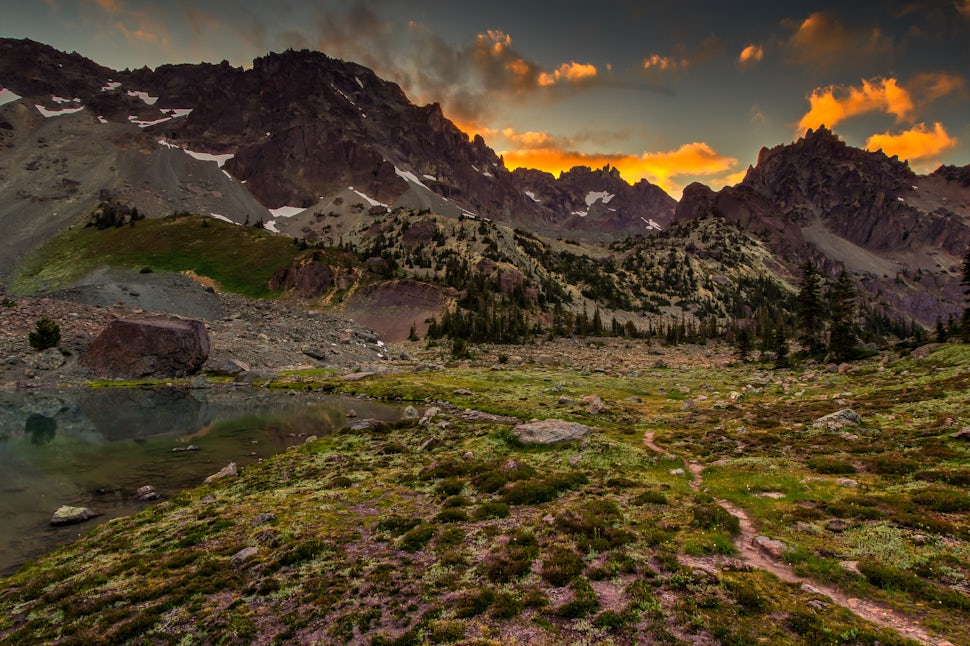The Impermanence of Our National Monuments
National monuments are under fire - but is it possible to make them disappear?

National monuments have been thrown into the crosshairs of the raging debate over public lands.
In his last six months in office, President Obama designated four highly controversial national monuments covering nearly 5 million acres of land and sea - much of which had been under consideration for fossil fuel extraction in the near future. While the establishment of these monuments was considered a tremendous victory for conservation groups nationwide, the response from conservatives was ominous - they won’t last.
But can national monuments simply disappear because the new administration doesn’t agree with them? The short answer: yes.
To understand whether this could happen, it is important to understand the legal authority behind national monuments. Unlike national parks, national monuments can be created unilaterally by the president under the Antiquities Act of 1906 or by an act of Congress. Implied in the legislative ability to create new monuments, both Congress and the president have the power to expand existing monuments as well - President Obama, for example, used this power to add 465 million acres to existing national monuments during his administration.
 Mount Saint Helens National Volcanic Monument, in Washington.
Mount Saint Helens National Volcanic Monument, in Washington.The key issue is that the Antiquities Act is silent on whether the president has the power to decommission national monuments designated by a predecessor. No president has previously attempted to remove a national monument designation by executive order, and constitutional scholars expect that such a move would spark a legal battle with conservationists that would end in the Supreme Court. And while President Trump has publicly criticized the Katahdin Woods and Waters National Monument, his administration has remained silent on whether it would be willing to slog out the legal battle to remove its status.
He may not need to, though.
Numerous national monuments - among them the monument precursors to Grand Canyon and Olympic National Parks - have been diminished in area by presidential order over the past century. None of these diminutions have faced legal challenge, effectively creating an implied presidential power within the Antiquities Act that President Trump could exploit to severely reduce national monuments that impinge on land sought after by oil companies.
Furthermore, the current Republican-majority Congress has an almost free hand to deal with national monuments as it sees fit. Congress can, and has, stripped national monuments of their designation and turned over the land to the states - which could in turn sell or lease the land for resource exploitation. Congress can also re-designate national monuments, not only to national parks, but also to national wildlife refuges - which lack many of the protections that national monuments enjoy.The latter could be a particularly politically savvy move for conservatives to attract moderate liberals and appease public opinion while just as effectively usurping the anti-fossil fuel bent of President Obama’s final monuments.
Potentially most damning to conservation efforts and President Obama’s legacy, Republicans could also dismantle his monuments by using a strict interpretation of the Antiquities Act. The act mandates that monuments be limited in size “to the smallest area compatible with proper care and management of the objects to be protected.” For Bear Ears - one of the most bitterly divisive monuments - is the smallest area a patchwork of individual archaeological sites, or the blanket 1.3-million acre area that President Obama designated?
Meanwhile, efforts are underway to amend the Antiquities Act itself as a means of limiting future monument designations. The “Protecting Local Communities from Executive Overreach Act” (H.R. 3946), introduced a month before the announcement of Bear Ears and Gold Butte, would limit new monument designations to 5,000 acres or less and prohibit monuments in areas with “significant local opposition.” The “National Monument Designation Process Act” (S.437) goes even further, requiring that all new national monuments be approved by an act of Congress and the state legislature. With a Republican majority in Congress through 2018, it is entirely possible that one or both of these pieces of legislation may become law.
Ultimately, the fate of President Obama’s, earlier, and future national monuments may depend on just how much conservationists, conservatives, President Trump, and the public at large are willing to stake on the battle for their future.
We want to acknowledge and thank the past, present, and future generations of all Native Nations and Indigenous Peoples whose ancestral lands we travel, explore, and play on. Always practice Leave No Trace ethics on your adventures and follow local regulations. Please explore responsibly!
Do you love the outdoors?
Yep, us too. That's why we send you the best local adventures, stories, and expert advice, right to your inbox.









